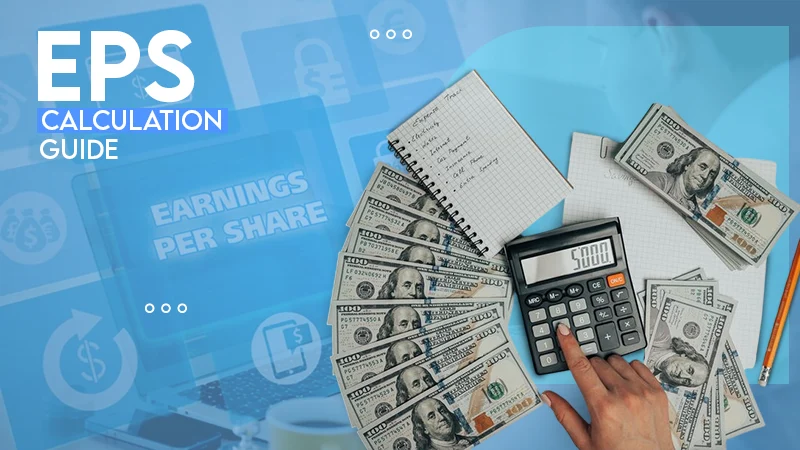The tax codes are the numbers used by employers to calculate the tax deduction from the pay and pension of the employees. “D0” is the tax code assigned to high-income taxpayers who fall under the 40% tax bracket.
In the UK, the tax is charged at graduated rates. It is an income tax system that consists of tax bands where the tax rate increases with the increase in income. The 40% tax bracket is one of the tax bands in the UK’s tax system that can be managed with the help of self-assessment tax return services. It is imposed on those who earn between £50,271 and £125,140.
If you fall into this bracket, understanding how it works can help you save on your bills and calculate the estimate of tax payable or you can also use our tax service. Thus, in today’s article, we will discuss the 40% tax bracket, the UK’s income tax breakdown, how the tax brackets work, and ways to avoid being in a high tax bracket.
What Does the 40% Tax Bracket Mean?
The 40% tax bracket is the higher tax band or bracket for the citizens and residents of the United Kingdom. It applies to those whose income exceeds the threshold of £50,271 and is up to £125,140. If you earn between £50,271 and £125,140, you will be taxed at 40% of your marginal income.
These direct taxes are levied and collected by the HMRC on behalf of the government. They are further utilized to fund various public services, like National Health Services (NHS) and welfare projects. Big companies or even individuals prefer year-end accounts and CT return services to manage their tax liabilities.
UK’s Income Tax Rate Breakdown: 2024 vs 2025
The income tax rate you should pay falls under certain categories called tax bands or tax brackets. The government of the United Kingdom is responsible for setting these tax brackets.
Remember, Scotland’s tax rates differ from the rest of the UK’s countries. Thus, we have provided all tax bands for the countries in the UK.
England, Wales, and Northern Ireland
The tax rates of these countries are divided into 4 bands, named as follows.
| Band | Tax Charged | Taxable Income(2023/24) | Taxable Income (2024/25) |
| Personal Allowance | 0% | £0 – £12,570 | £0 – £12,570 |
| Basic Rate | 20% | £12,571 – £50,270 | £12,571 – £50,270 |
| Higher Rate | 40% | £50,271 – £125,140 | £50,271 – £125,140 |
| Additional Rate | 45% | £125,141 or above | £125,141 or above |
You are not obligated to pay any tax if your income is between £0 and £12,571.
Your Personal Allowance goes down by £1 for every £2 that your adjusted net income is above £100,000. It means your allowance is zero if your income is £125,140 or above.
Scotland
Scotland’s tax charges are categorized into 7 different bands, named as follows.
| Band | Tax Charged | Taxable Income (2023/24) | Taxable Income (2024/25) |
| Personal Allowance | 0% | £0 – £12,570 | £0 – £12,570 |
| Started Rate | 19% | £12,571 – £14,732 | £12,571 – £14,876 |
| Basic Rate | 20% | £14,733 – £25,688 | £14,877 – £26,561 |
| Intermediate Rate | 21% | £25,689 – £43,662 | £26,562 – £43,662 |
| Higher Rate | 42% | £43,663 – £125,140 | £43,663 – £75,000 |
| Advanced Rate | 45% | Not in use | £75,001 – £125,140 |
| Top Rate | 48% | £125,140 or above | £125,140 or above |
Similar to other countries in the United Kingdom, you do not get any personal allowances in Scotland if your income is over £125,140.
Do I Have to Pay 40% of My Total Income?
No, the 40% tax bracket is a marginal rate that implies only the portion of your income that exceeds £50,271. It will not be charged on your entire income. Certainly, it lowers the payable amount for the taxpayer.
Example – The income tax charged on £75,000 will be as follows,
| Tax Bands | Tax Charged |
| Personal Allowance | No tax is charged on £12,570 |
| Basic Rate | £37,500 x 20% = £7,500 |
| Higher Rate | £24,730 x 40% = £9,892 |
| Total tax paid before national insurance | £17,392 |
Rather than paying the higher tax rate on a total of £75,000, it is only charged on the amount exceeding £50,270.
What Do Tax Codes Represent?
Tax codes consist of numbers and letters that define the income tax liability of an individual, where the numbers represent the tax-free amount of the income and the letters denote the situation affecting the income.
The following are the letters present in the tax codes, each depicting a different situation.
| Letter | Meaning |
| L | Eligible for a normal tax-free personal allowance. |
| M | Received 10% transfer of your partner’s personal allowance. |
| N | Transferred 10% of your personal allowance to your partner. |
| T | Some items are under review by HMRC. |
| OT | The personal allowance is used up, or you have recently changed your job and haven’t given the necessary details to your employer. |
| BR | All income is taxed at the basic rate (20%). |
| D0 | All income is taxed at the higher rate (40%). |
| D1 | All income is taxed at the additional rate (45%). |
| NT | You are not paying tax on this income. |
| S | Income or pension is taxed using the tax rates of Scotland. |
| S0T | The personal allowance (Scotland) is used up, or you have recently changed your job and haven’t given the necessary details to your employer. |
| SBR | All income is taxed at the basic rate in Scotland (20%). |
| SD0 | All income is taxed at the intermediate rate in Scotland (21%). |
| SD1 | Every cent of income is taxed at a higher rate in Scotland (42%). |
| SD2 | All income is taxed at the advanced rate in Scotland (45%). |
| SD3 | All income is taxed at the top rate in Scotland (48%). |
The combination of the aforementioned letters and numbers represents the payable tax amount of a person.
How to Avoid Higher Taxes on Your Income?
Remember that income is not solely classified as earnings; bonuses and earnings from other sources are also included in taxable income. If a person earns more than £1,00,000, their personal allowance will be deducted by £1 for every £2 earned above £1,00,000. Therefore, it is essential to avoid being in the higher tax bands.
Here are a few ways you can reduce your tax bills:
- Contributing to pensions: Investing your money into pensions can be the best choice, as pensions are free from income tax and capital tax. It not only reduces your tax income but also secures your future. The only downside of a pension is that you can’t access this money until you reach the age of 55.
- Start a business or company: Forming a limited business or company provides tax allowances and reliefs, as you have to pay taxes on the profits rather than on income. Process your personal big expenditures through your business. Indeed, this will lower your income generated through the business, leading to a lower income tax.
- Invest in an ISA: In the UK, one of the easiest ways to save tax money is through investing in an individual savings account (ISA). These accounts are free from income tax and also provide non-taxable interest on the amount. Investing in these accounts can save up to £20,000 each year.
- Utilize marriage tax allowances: A marriage allowance is a way to share your 10% personal allowance with your partner before paying income tax. It exempts couples from paying extra tax and helps them save up to £250 each year.
- Use personal savings allowances: The UK government allows saving tax money on the interest of personal savings up to certain boundaries. This limit is £1,000 and £500 for basic and high taxpayers, respectively.
- Examine dividend allowance: Citizens of the UK get a dividend allowance each year that is not taxable. The dividend allowance limit updates each year; it was £1000 in 2023/24 and now £500 in 2024/25.
- Spend on charity: As a taxpayer in the UK, you can get income tax relief by claiming and donating through Gift Aid donation schemes. It is a tax relief scheme that allows 25% tax reclaim to UK charities and an additional 25% reclaim to higher taxpayers in the UK.
- Salary sacrifice: Contributing to salary sacrifice schemes offered by employers is also an effective way to reduce taxable income. These schemes include childcare vouchers and cycle-to-work schemes that are deducted from the gross income, reducing the payable tax.
You can also use more than one of the aforementioned ways to reduce your taxable income, as employing multiple ways can save more than £30,000 every year. Another thing you can do is book a consultation with us through our contact us page and we will help you in saving money on tax.
Will The 40% Tax Bracket Ever Change?
The tax rates are set and announced each year in the annual budget of the government. These are tentative and are often adjusted by the government. For example, the highest rate of income tax on earned income was 83% in 1970; after that, Margaret Thatcher’s government reduced it to 60% in 1980 and then to 40% in 1989.
The current tax brackets are unlikely to change until 2028, as the UK’s current tax allowance and bands are frozen.
Wrapping Up
Thoroughly understanding the tax brackets in the UK can help you save money and avoid being in the higher-rate tax bracket. Although the 40% tax bracket rate is only charged on amounts exceeding the limit, the payable amount can be significant. Moreover, remember to utilize multiple ways to reduce your taxable income, such as contributions to allowances and schemes.







